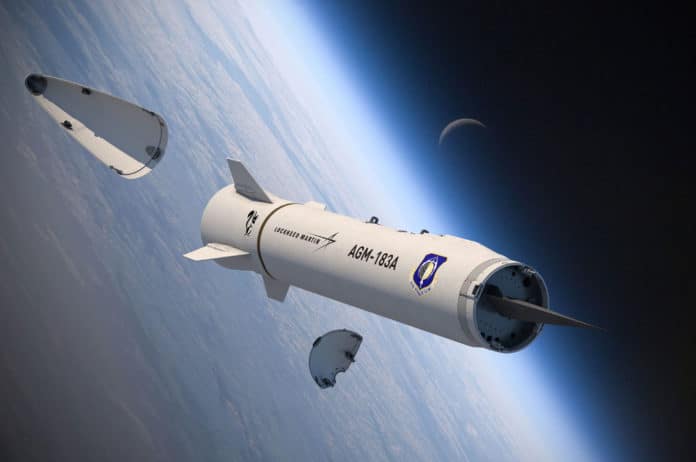The U.S. Air Force has successfully tested the warhead for an AGM-183A Air-Launched Rapid Response Weapon (ARRW) for the first time. The 780th Test Squadron detonated the warhead at Eglin AFB in Florida, the service said.
The high explosive blast fragmentation warhead will go inside the boost-glide vehicle that sits at the tip of the AGM-183A missile.
The first-of-its-kind test for the air-to-ground, rocket-powered, high-altitude, hypersonic missile collected data on the lethality of the unique weapon. According to 780 Squadron Test Manager David Spiker, the unique nature and shape of the warhead required a lot of firsts for everyone involved. Some of the firsts were the new and unorthodox design and construction of the test arena, the test procedures, and equipment, the warhead’s fragmentation data collecting, and the post-test data processing to ensure the warhead’s effects have been accurately characterized.
As reported by the U.S. Air Force, the first flight test of the prototype of the AGM-183A ARRW air-launched hypersonic missile, undertaken in April, was aborted after a problem with its launch sequence. The service has planned another flight test this month.
AGM-183A is being developed as a small-sized, air-launched weapon system. It is designed to be carried aloft by a bomber, such as the Boeing B-52 Stratofortress, dropped, and then carried to a high-altitude apex by a booster rocket, at which point the warhead separates and glides back to earth – and its target – at hypersonic speeds.
The missile is being developed by Lockheed Martin under a $480 million contract with the Pentagon and, according to the Army, could be put into service as early as 2022.
